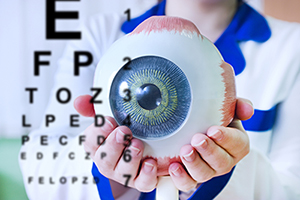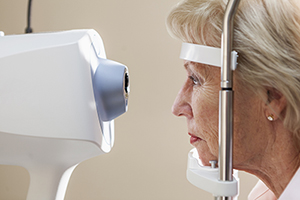Macular Degeneration is a condition that affects the central area of your vision, which provides the ability to see small details such as road signs and print, and aids daytime vision. The cone cells in the macula, a region at the rear of the interior of the eyeball, respond to light and color. They break down on order to send an electrical response through the optic nerve to the brain.
There is a yellow-colored pigment, Lutein, which is deposited in the retina to help prevent toxicity from ultra-violet and blue light. The cone photoreceptors are lined with fatty membrane and are connected to nerve fibers. Just beneath this carpet of photoreceptors is the retina pigment epithelium, and then a clear membrane- called the Bruch’s Membrane- that separates the retina from the underlying blood vessel layer.
Free radicals are formed during the vision process, which requires rapid neutralization by circulating antioxidants. In order to maintain the right chemistry, we need to choose healthy foods and supplements, digest and absorb them, have good liver function for storage and metabolism, circulation support, and sleep a solid five hours nightly. We also need to decrease inflammation in other parts of our bodies, which will compete for the antioxidants.
So if your body has a low antioxidant “bank account”, degeneration in the macula may result. The cells cannot be rebuilt quickly enough.
Symptoms of macular degeneration include: difficulty with small print, missing areas in vision, and distortion of the letters on a line. Ninety percent of people who have AMD have the dry, slowly progressive form of macular degeneration. The other 10 percent suffer from the wet form, which may cause a sudden loss of central vision.
In the dry form of macular degeneration, toxic byproducts accumulate in the Bruch’s Membrane, forming yellow spots called drusen. The pigment layer can also erode, further limiting the body’s ability to clear toxic materials from the eye. Again, the goal is to increase your antioxidant bank account and make good lifestyle choices to keep these cells functioning well.
In the wet form of macular degeneration, blood vessels may invade the retina and begin bleeding, causing sudden vision loss. Some people will respond to immediate photodynamic laser treatment, but others may be left with a large blind spot and the loss of reading vision in that eye. Therefore, it is important to contact an eye doctor immediately and begin preventive measures for the other eye, as well.
The Amsler Grid, a checkboard-patterened square, has parallel vertical and horizontal lines. You should look at the central dot with one eye covered, and note the pattern of the lines. If any of the lines in any direction are missing or wavy, mark it with a pencil or make a note. This Amsler grid can be used to determine if there is a disorder of central vision (usually the macula) . It is an excellent way to follow macular degeneration to see if it is stable or progressing.
Amsler Grid
Treatments
Although many medical experts contend that there is no cure for macular degeneration, I have discovered that there are natural remedies for people who suffer or who are at risk from the dry form of AMD.
AMD is a reflection of an underlying condition. I recognize that it is due often to poor digestion for several decades, plus a lifetime of light bombardment. Inadequate antioxidant defenses may be due to poor nutrition from a fast food diet, or lack of absorption of the essential antioxidants. Poor circulation, smoking, untreated heart disease, and a high saturated fat diet may contribute.
The 8 year ARED (Age-Related Eye Disease) study demonstrated that antioxidants, beta-carotene,vitamins C and E, and Zinc significantly reduced the risk of vision loss from moderate and severe macular degeneration. Add Lutein, another naturally occurring carotenoid which reflects harmful UV and blue light and builds retina pigment defenses. To learn more about how 6mg Lutein daily for high risk patients may decrease their chances of developing AMD, visit www.luteininfo.com.
Did you know that 30% of the human retina and brain are made of that most important omega-3 fatty acid,DHA (docosahexaenoic acid).DHA is a major component of the retina photo receptors. To rebuild the retina, add cold-water fatty fish to your diet or supplement with DHA. DHA, the end product of the omega-3 fatty acids, is in every cell of our bodies and is more important than flax seeds or EPA in fish oil. To learn more, visit www.martekbio.com, or www.carlson.com. You can read more about all the antioxidants, including Lutein and DHA in my book, The Eye Care Revolution, and The DHA Story, both of which can be ordered from Amazon.com.
Other recommendations
- Wear UV-protecting sunglasses and hats.
- Teach all of your family members to wear sunglasses.
- Do not smoke.
- Control high-blood pressure, cholesterol, blood sugar and heart disease.
- Eat a balanced diet rich in green leafy vegetables, fruits, and cold water fish such as tuna, salmon, mackerel, and sardines.
- Take a daily multivitamin with 2 mg Lutein. Take 6-10 mg Lutein if you have Macular Degeneration or are at risk. Take 200-500mg of DHA for vision support as well.
- Get an annual eye exam.
- Check the Amsler Grid frequently.






